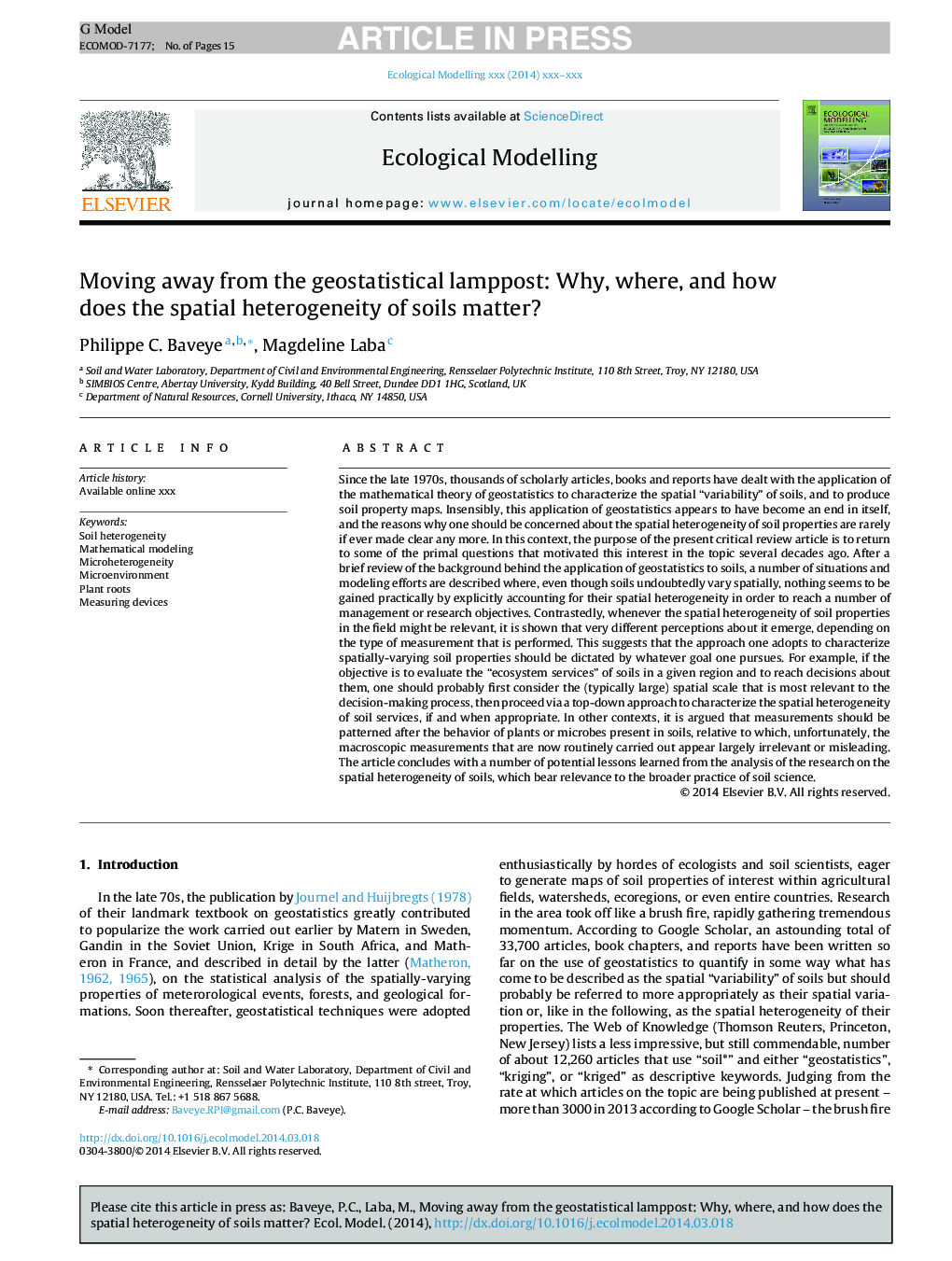| Article ID | Journal | Published Year | Pages | File Type |
|---|---|---|---|---|
| 6296682 | Ecological Modelling | 2015 | 15 Pages |
Abstract
Since the late 1970s, thousands of scholarly articles, books and reports have dealt with the application of the mathematical theory of geostatistics to characterize the spatial “variability” of soils, and to produce soil property maps. Insensibly, this application of geostatistics appears to have become an end in itself, and the reasons why one should be concerned about the spatial heterogeneity of soil properties are rarely if ever made clear any more. In this context, the purpose of the present critical review article is to return to some of the primal questions that motivated this interest in the topic several decades ago. After a brief review of the background behind the application of geostatistics to soils, a number of situations and modeling efforts are described where, even though soils undoubtedly vary spatially, nothing seems to be gained practically by explicitly accounting for their spatial heterogeneity in order to reach a number of management or research objectives. Contrastedly, whenever the spatial heterogeneity of soil properties in the field might be relevant, it is shown that very different perceptions about it emerge, depending on the type of measurement that is performed. This suggests that the approach one adopts to characterize spatially-varying soil properties should be dictated by whatever goal one pursues. For example, if the objective is to evaluate the “ecosystem services” of soils in a given region and to reach decisions about them, one should probably first consider the (typically large) spatial scale that is most relevant to the decision-making process, then proceed via a top-down approach to characterize the spatial heterogeneity of soil services, if and when appropriate. In other contexts, it is argued that measurements should be patterned after the behavior of plants or microbes present in soils, relative to which, unfortunately, the macroscopic measurements that are now routinely carried out appear largely irrelevant or misleading. The article concludes with a number of potential lessons learned from the analysis of the research on the spatial heterogeneity of soils, which bear relevance to the broader practice of soil science.
Keywords
Related Topics
Life Sciences
Agricultural and Biological Sciences
Ecology, Evolution, Behavior and Systematics
Authors
Philippe C. Baveye, Magdeline Laba,
